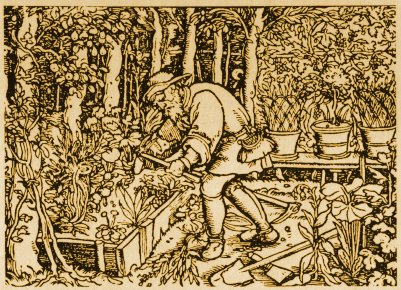
Varietal Choices
5 Mt/Miryai Mt. Criteria for Variety Selection
In the Living Gods, Let the hallowed Light of Transcendent Truth be praised. Let the Sweet Mystery of Miryai awaken in the heart of hearts.

Each crop is scored between 1 and five in each of
the twelve criteria, and the total is added up as indicative of the crops
overall value comparred to other crops.
| Months | Dec (<28°) | Jan (<28°) | Feb (<28°) | Mar (<28°) | Apr (>28°) | May (>32°) | Jun (>32°) | Jul (>32°) | Aug (>32°) | Sep (>32°) | Oct (>32°) | Nov (>28°) | Total: (>28° -239 Days) |
| Historical GDD* (<50°) | 8 GDD | 7 GDD | 24 GDD | 42 GDD | 96 GDD | 208 GDD | 378 GDD | 586 GDD | 558 GDD | 462 GDD | 229 GDD | 47 GDD | 2517 (April-October historical) |
| GDD in 2020's*(+266) | 8 GDD | 7 GDD | 24 GDD | 42 GDD | 134 GDD | 246 GDD | 416 GDD | 624 GDD | 596 GDD | 500 GDD | 267 GDD | 47 GDD | 2783 GDD (April-October in 2020's) |
| Historical GDD* (<40°) | 129 | 141 | 185 | 247 | 320 | 487 | 637 | 812 | 793 | 669 | 499 | 253 | 5173 |
| Weekly Frostfree Value ** | 0 | 0 | 0 | 0 | 1/4 | 1/2 | 1 | 1 | 1 | 1 | 1/2 | 1/4 | 34 Wks Valued as 22 Warm Wks |
| Daily Water per 100' | 0 | 0 | 0 | 0 | 0 | (3.1-6.2g per day)
|
(6.3-12.5g per day)
|
(7.8-15.6g per day) | (9.4-18.7g per day) | (6.2-12.5g per day) | (3.1-6.2g per day) | 0 | 1000-2000 Gallons per Year
(dependent on weather) |
CLIMATE
(Sunset Zone 14, USDA 8b)
Climate and water availability determines what foods one can grow and when they are to be planted. This chart above is based on the climate of the Laughlin Range with data from the Howard's Forest Weather station 2 miles away. (The frost dates have been adjusted by 19 extra days to account for global warming. See Kootenay Climate Study) Most areas will have a weather station and climate data to determine the exact growing environment of any location. The data often includes what is called a frost free growing period, based on the likelihood of killing frosts on certain dates. Frost dates are usually based on a 50% probability of a frost, but here it is for a 20% chance of frost. If your garden is going to freeze half the time, then it cannot be relied upon to consistently furnish ones food. The 20% frost dates are more workable, because they are less than a week off an almost 0% chance, and this week can be checked against local weather for a 99% frost free planting date.
For Miryai Mt this 20% frost date falls on 5/1 in the spring and on 10/23 in the fall. (0% frost at all is likely between 5/8 and 10/11, just 7 days later and 11 days earlier than the 20% Frost Date used for spring planting.). This 20% frost date gives a 175 day frost free growing period (80% of the time) and a 239 day hard freeze free period from 3/28 to 11/21.
Growing Degrees are a way for farmers to determine how much heat is available to grow plants. The Growing Degree Days of this site are 2850. This figure has been adjusted from the historical data because of global warming. (266 gdd were added for global warming for the 2020's, during the 2030's an additional 7 day lengthening of the frost free period and increased gdd can be expected.)
* (The Chart is based on the climate of the Laughlin Range with data from the Howard's Forest Weather station 2 miles away. (The frost dates have been adjusted by 19 extra days to account for global warming.)Frost dates are usually based on a 50% probability, here it is for a 20% chance of frost after 5/1 and before 10/23. (No frost at all is likely between 5/8 and 10/11, just 7 days later and 11 days earlier than the 20% Frost Date. By watching weather forecasts, all frost should be avoidable even in the coldest of years since weather forecasts are usually accurate within this time frame.) The 20% frost date gives a 175 day frost free growing period (80% of the time) and a 239 day hard freeze free period from 3/28 to 11/21. The Growing Degree Days of this site are 2783 (266 gdd added for global warming in 2020's, during the 2030's an additional 7 day lengthening of the frost free period and increased gdd can be expected.)
**(+266 gdd added for global warming in 2020's) See Kootenay Climate Study)
*** Garden Space during warm months is more valuable than in cold ones, making grains that grow mostly during frost times more valuable per growing time. They also produce biomass to keep the compost cycle going and mature without irrigation, compounding their value. A Garden Bed is considered only 1/4 as valuable during frosty April and Nov as during summer, and cooler May and October are considered only 1/2 as valuable as a summer bed where increased sunlight and warmth accelerates growth.
Return to Home Page
Yesai the Nazorean 2021 - All Rights
Reserved
![]()